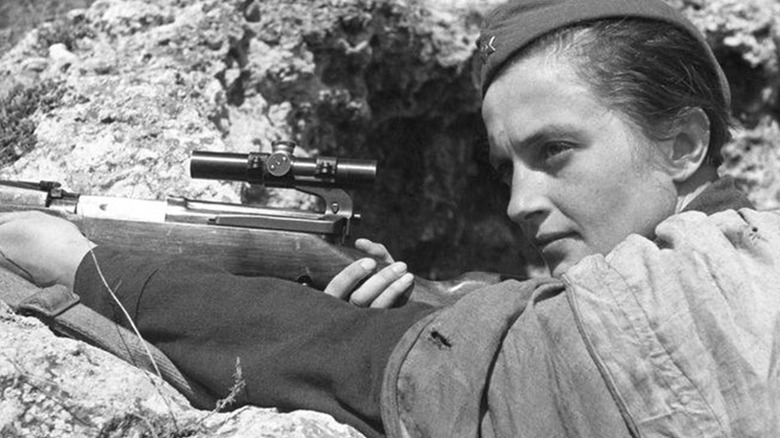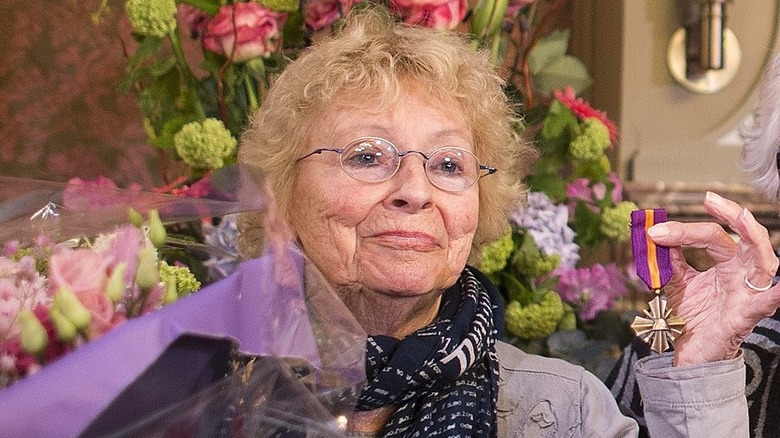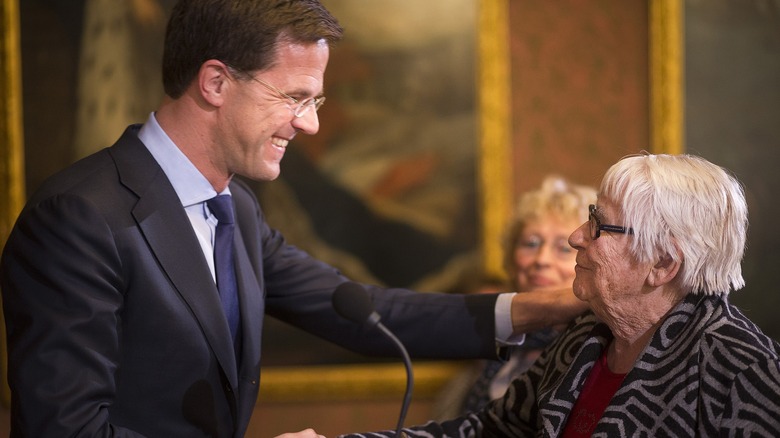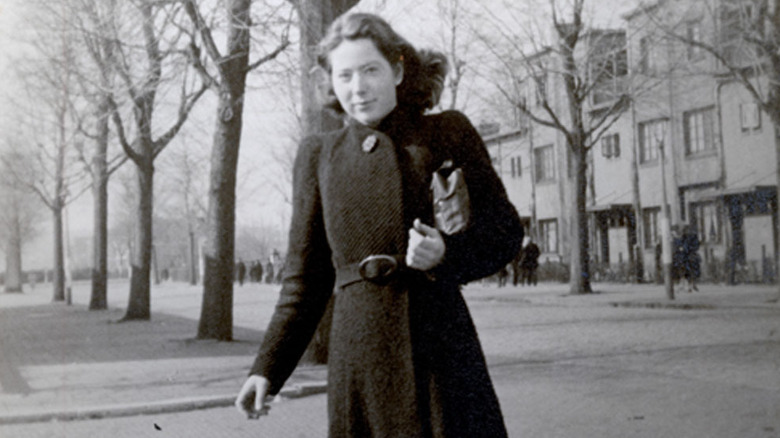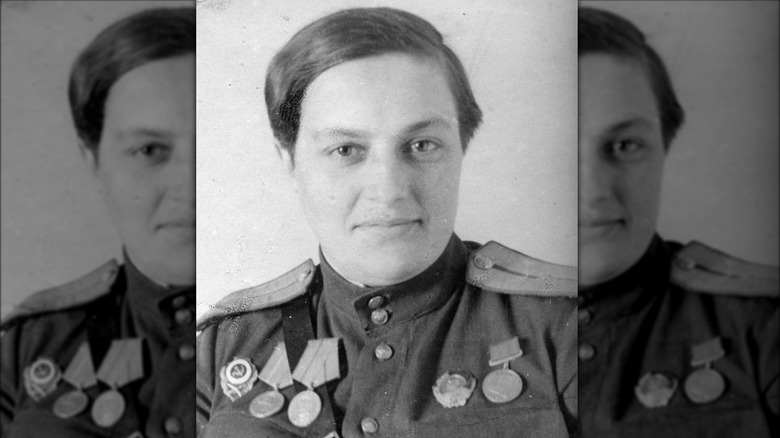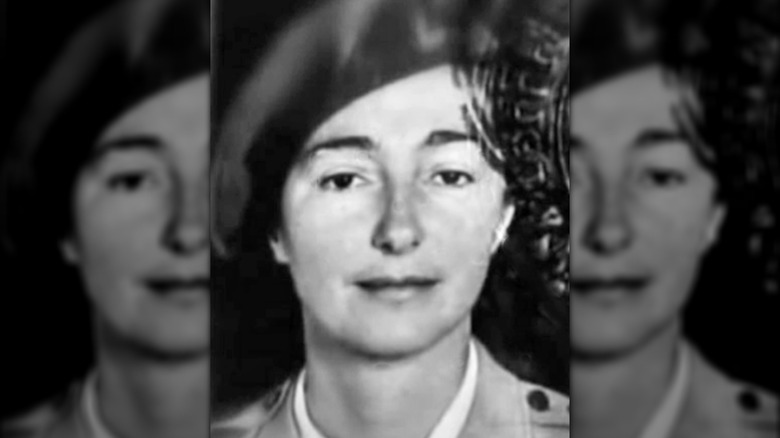The Deadliest Female Assassins Of World War II
The words "female assassin" will likely bring to mind all sorts of fiction and Hollywood-inspired visions of black-clad, gun-and-sword-wielding murder machines who deflect bullets with blades, slice through crowds of hundreds "Kill Bill" style, and do some sweet slo-mo poses along the way. In reality, of course, the best assassin is the one you never notice, the one who melts into a crowd or looks nothing like an assassin at all. Such is the case with some of the most prominent female assassins from World War II, who were typically young, blended into society in some way, and did their business with deadly precision.
Details and numbers can be understandably hard to come by when it comes to the assassination business. But, we do have concrete records of several female assassins from World War II. No doubt there were many more in many different countries whose names will never be known, same as for male assassins.
Assassins like the Dutch teenage trio Freddie Oversteegen, Truus Oversteegen, and Hannie Schaft played a completely unofficial role in the Dutch resistance movement to German occupation, doing things like luring soldiers into the woods before shooting them. Other assassins like Russian Lyudmila Pavlochenko were military officers and snipers who killed in state-sanctioned warfare. Yet others like Krystyna Skarbek were employed by the British Special Operations Executive (SOE). But in all cases, reality was far less glamorous than a spy movie. And in some cases, the business of resisting and killing Nazis proved lethal.
[Featured image by Израиль Абрамович Озерский via Wikimedia Commons | Cropped and scaled | Article 1281 of the Civil Code of the Russian Federation
Freddie Oversteegen shot Nazis from her bicycle
In May 1940, the German war machine stormed into Belgium, the Netherlands, France, and Luxembourg at the same time. Nazi Germany had the manpower, the firepower, the self-belief, and the Blitzkrieg — lightning war — tactics. The Netherlands had maintained a policy of neutrality for decades and were militarily unprepared to deal with such an onslaught. But piece by piece, the Dutch resisted German occupation. And in the city of Haarlem, Haarlem Council of Resistance leader Frans van der Wiel found his perfect, Nazi-killing assassins in the form of two teenage sisters: Freddie and Truus Oversteegen.
The small and shy Freddie joined the Dutch resistance in 1940 at 14 years old and with her mother's approval. Freddie's mother was a single mom who raised her daughters on a barge — and she drove Freddie around on a bicycle while the teen conducted drive-by shootings of German soldiers. Freddie was also the first of the sisters to kill someone. As The Washington Post quotes her, "It was tragic and very difficult and we cried about it afterwards ... It never suits anybody, unless they are real criminals . . . One loses everything. It poisons the beautiful things in life."
Per The Washington Post, Freddie coped with war trauma by, "getting married and having babies." She received the Mobilization War Cross in 2014 from Dutch Prime Minister Mark Rutte, and died four years later in 2018 at the age of 92.
[Featured image by Ministerie van Defensie via Wikimedia Commons | Cropped and scaled | CC BY-SA 4.0]
Truus Oversteegen led a trio of Dutch assassins
Along with her younger sister Freddie, Truus Oversteegen joined the Haarlem Council of Resistance in 1940. At the time, they brought the resistance cell up to seven people. And even though sites like Express say that Freddie, Truus, and later a third girl Hannie Schaft killed "hundreds" of Nazis, that number is completely unverifiable.
Rather, we have anecdotes of the girl's activities, like when they were sent to "liquidate" an SS officer, per The Guardian. Truus, in this case, lured the officer out of a restaurant with the promise of a walk in the woods, while her sister Freddie kept watch. When everything was clear, another resistance member killed the officer. Very often the sisters, along with Schaft, worked together in this way. Besides direct assassinations they also burned down a German warehouse, sabotaged bridges and railway lines, and hid Jews and other targeted groups from Nazis. As Truss' daughter Hannie Menger told The Guardian, "Because they were girls, nobody noticed them."
Truus was the leader of the Dutch teenage assassin trio. In a 2016 interview with Vice, her younger sister Freddie recounts being simultaneously proud and jealous of Truus, whom she described as "an unsightly child" but "the brave one" and "very good at public speaking." After the war, Truus turned her attention to war-inspired art and also wrote a 1998 memoir, "Not Then, Not Now, Not Ever." Like Freddie, she won the Dutch Mobilization War Cross in 2014. She died in 2016 at 92 years old.
[Featured image by Ministerie van Defensie via Wikimedia Commons | Cropped and scaled | CC BY-SA 4.0]
Hannie Schaft was caught and killed
Jannetje Johanna Schaft, aka "Hannie" Schaft, was the third member of the Dutch female assassin trio along with the Overgeesten sisters, and the eighth and final member of the Haarlem Council of Resistance. As the Dutch Review explains, Hannie grew up in a politically aware household and went to the University of Amsterdam in 1938 to study law. A "serious, principled girl" and "bookworm," per The New York Times, she got involved in the war by helping the Red Cross when Nazi Germany invaded Poland. She left school after refusing to declare loyalty to Germany, after which her family moved back to Haarlem and she got involved in the Dutch resistance.
Known to German soldiers as the infamous "girl with the red hair," researchers attribute at least six attacks to her, including the deaths of a Nazi-collaborating baker and hairdresser. Before each kill she fixed her hair and put on makeup before, as The New York Times quotes, "I'll die clean and beautiful." German soldiers eventually targeted her parents to flush her out, and she dyed her hair black to try and escape. Nonetheless, she was caught and her body was later found in a mass grave following the liberation of the Netherlands in May, 1945.
Hannie has taken on legendary status in the Netherlands. In addition to having fifteen streets in the country named after her, she has a memorial in Haarlem and had a movie made about her in 1981, "The Girl with the Red Hair."
[Featured image by Unknown Author via Wikimedia Commons | Cropped and scaled]
Lyudmila Pavlichenko is history's deadliest female sniper
Lyudmila Pavlichenko lived a life very different from the previous three women in this article. She assassinated not as part of an underground resistance movement — but looking down the scope of a sniper's rifle in the Russian army. By the numbers, "Lady Death" has easily assassinated more Nazis than anyone else on this list, with a combat record of 309 confirmed kills. If not for a shrapnel injury to the face in 1942 that took her out of combat at a mere 25 years old, there's no telling how many more people she could have killed. And as the National World War II Museum quotes, German soldiers kept track of her shots as closely as anyone else. Shortly before she finished active duty, German soldiers once said, "If we catch you, we will tear you into 309 pieces and scatter them to the winds!"
As the National Park Service recounts, Pavlichenko grew up a tomboy who preferred sports and earned a marksman certificate in a shooting club. In her fourth year of studying history at Kiev University in 1941, World War II broke out. Rather than become a nurse as some suggested, she joined the Red Army in their Chapayev Rifle Division. Pavlichenko was one of about 2,000 female snipers in the army, but she was definitely the most famous. In 1942, she even did a press tour in the U.S. with Eleanor Roosevelt. Pavlichenko died in 1974.
[Featured image by Unknown Author via Wikimedia Commons | Cropped and scaled | Article 1281 of the Civil Code of the Russian Federation
Krystyna Skarbek was Winston Churchill's favorite spy
Krystyna Skarbek lived an assassin's life very different from the other women on this list. Born Maria Krystyna Janina Skarbek to an affluent Polish family in 1908, Germany invaded Poland while she was on vacation in the African continent with her husband. As the BBC says, they instantly headed north — her husband to join the French army and she to MI6 where she basically "demand[ed] to be taken on."
Per the BBC, Skarbek could play the "bored countess" role across country borders, slip undercover, play off of her connections, and pretend to smoke cigarettes all the while. She even suggested skiing across Eastern Europe to gather intelligence on German activities. MI6 liked the idea so much that she became their first female agent. Historian Clare Mulley, author of the 2012 Granville biography "The Spy Who Loved," said on the BBC, "Her great tool is her brain. She's so quick-thinking; talks her way in and talks her way out." As a spy, Skarbek took on fake names like Christine Granville and Pauline Armand. Winston Churchill called her his "favorite spy."
And yes, Granville assassinated people. As Daily Mail shows, one of her signature weapons — a dagger in a hairbrush — is on display at the House on the Hill Museum in Stansted Mountfitchet, England. After the war ended, she wound up doing menial jobs in England like cleaning toilets. She died in a bizarre lover's spat in 1952 when a jaded lover stabbed her to death in her low-rent lodgings in Earl's Court, London.
[Featured image by Anonymous via Wikimedia Commons | Cropped and scaled]
